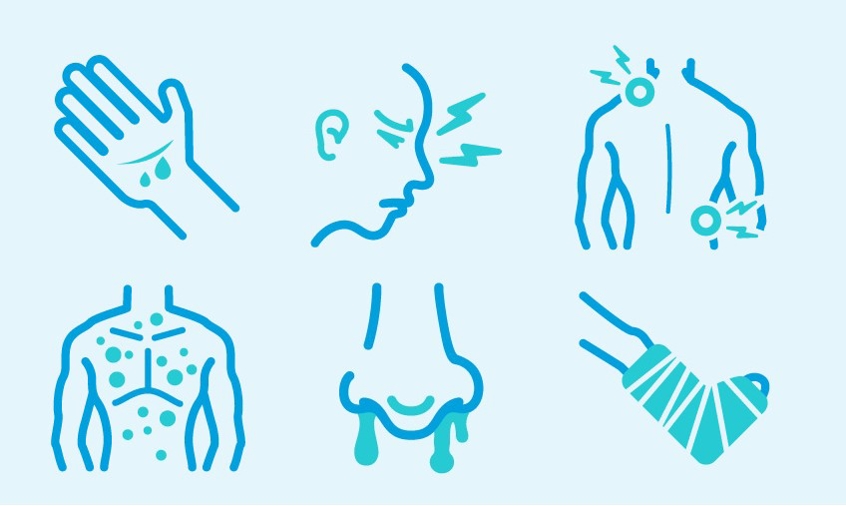Faces of Black History Month: Health and wellness pioneers
Feb 14, 2022

February is Black History Month, an annual observance originating in the United States in 1976 and dedicated to celebrating the achievements and history of Black Americans. Each year, the Association for the Study of African American Life & History (ASALH) selects a theme for the month, and this year’s is “Black Health & Wellness.” Here, you can meet and celebrate some of Black history’s pioneers of health and wellness.
Dr. Charles Richard Drew
Pioneered the use and preservation of blood plasma
(1904–1950)
Dr. Charles Richard Drew’s lifetime achievements earned him the popular title, “Father of the Blood Bank.” He broke racial barriers to become one of the most important scientists and physicians of the 20thcentury, innovating the blood banking process and standardizing procedures for long-term blood preservation and storage techniques.1As the full-time medical director of the Blood for Britain project during WWII, Dr. Drew supervised the successful collection of 14,500 pints of vital plasma for the British and transformed their procedures.2
In 1941, Dr. Drew was appointed director of the first American Red Cross Blood Bank. During this time, Drew argued that authorities should stop excluding the blood of Black Americans from plasma-supply networks. After the armed forces ruled in 1942 that the blood of Black Americans would be accepted but would have to be stored separately from that of whites, Drew resigned his official posts. He then returned to Freedman’s Hospital and Howard University, where he served as a surgeon and professor of medicine from 1942 to 1950.
Rachel "Anna" Knight
Adventist missionary, nurse, teacher, Bible worker
(1874–1972)
Rachel “Anna” Knight graduated as a missionary nurse from Battle Creek Sanitarium in 1898.3
Shortly after, she established a one-room mission school near Gitano, Miss., not far from her childhood home. This was only the beginning of a long, colorful, and successful career as a missionary, educator and nurse.
In the fall of 1901, Knight set sail with some fellow workers for Calcutta, becoming the “first black woman to be sent to India by a mission board of any denomination. “She spent over six years in India, working and becoming acquainted with the Hindi language. While there, she became aware of the Young Women’s Christian Association (YWCA), which, at the time, provided a safe place for young women and a venue for health lectures and other classes. At a later point in her career, Knight would organize the first Black YWCA in Atlanta, Ga.
In Knight’s autobiography, “Mississippi Girl” – which was published in 1951 – she gave a statistical summary of her work since 1911: “I have held 9,388 meetings and have made 11,744 missionary visits. My work required the writing of 48,918 letters, and in getting to my appointments I have traveled 554,439 miles.” By the time Knight retired, 34 schools were under her supervision at the Southern Union Conference of Seventh-day Adventists.
George Washington Carver
Agricultural scientist, inventor, health educator
(D. 1943)
Born into slavery, George Washington Carver went on to revolutionize farming in the southern United States by encouraging improved farm methods, crop diversification and soil conservation.5
After becoming the Tuskegee Institute’s director of agricultural research in 1896, Carver devoted his time to research projects aimed at helping farmers in the South improve their economic situation. As a remedy to the exhausted soil left behind by cotton, he urged Southern farmers to plant peanuts and soybeans – which could restore nitrogen to the soil also provide protein, which was sorely lacking in the diet of many Southerners. Carver also enlarged the commercial possibility of peanuts and sweet potatoes through a program of laboratory research that ultimately developed hundreds of derivative products from peanuts and sweet potatoes.
As a botany and agriculture teacher, Carver focused on self-sufficiency and conservation through a series of free, simply written brochures that included “information on crops, cultivation techniques, and recipes for nutritious meals.”5He also designed the Jessup Wagon, a demonstration laboratory on wheels. Always modest about success, one of Carver’s most famous sayings is, “It is not the style of clothes one wears, neither the kind of automobile one drives, nor the amount of money one has in the bank, that counts. These mean nothing. It is simply service that measures success.”
Mary Eliza Mahoney
America’s first Black professional nurse
(1845-1926)
Born in 1845 to former slaves, Mary Eliza Mahoney worked as a cook and janitor before enrolling in the nursing program at the New England Hospital for Women and Children in Boston.6
Because of rampant racism in the U.S. public nursing sector, Mahoney sought employment in the private sector and was employed for many years as a private-duty nurse. She was one of the first Black members of what is now the American Nurses Association and later joined the National Association of Colored Graduate Nurses (NACGN). After delivering an address at the NACGN’s first annual convention in 1909, the association awarded her lifetime membership and elected her its first national chaplain.7
In recognition of Mary’s lifetime of work, the NACGN established the Mary Mahoney Award in 1936. When the NACGN merged with the American Nurses Association in 1951, the award was continued. According to the American Nurses Association website, today, the Mary Mahoney Award is bestowed biennially in recognition of significant contributions in interracial relationships.
Rebecca Lee Crumpler, M.D.
(No existing photographs)
First Black woman to earn a medical degree in the U.S.
(1831–1895)
As the first Black woman to earn a medical degree in the United States, Dr. Crumpler focused much of her career on the needs of poor people who had little or no access to medical care. She graduated from New England Female Medical College in 1864 with the official degree “Doctress of Medicine.”8Dr. Crumpler was the only Black woman to graduate from the institution, which had expanded from training women to work only as midwives to include a more comprehensive medical education.
After initially practicing in Boston, Dr. Crumpler moved to Richmond, Va., where she collaborated with the Freedmen’s Bureau and other charity and missionary groups to care for freed Black Americans. In the latter part of her career, she treated patients in and around her home in Boston. "I returned to my former home, Boston,” she wrote, “where I entered into the work with renewed vigor, practicing outside, and receiving children in the house for treatment; regardless, in a measure, of remuneration."9
In 1883, Dr. Crumpler published “A Book of Medical Discourses,” which features advice on treating illnesses in infants, young children, and women of childbearing age.
NOTES
1“Charles Richard Drew,” American Chemical Society, accessed Jan. 26, 2022,https://www.acs.org/content/ac...
2“Charles R. Drew, MD,” Charles R. Drew University of Medicine and Science, accessed Jan. 26, 2022,https://www.cdrewu.edu/about-c...
3Dorothy Knight Marsh, “Knight, Rachel ‘Anna’ (1874-1972),” Encyclopedia of Seventh-day Adventists, accessed Jan. 26, 2022,https://encyclopedia.adventist...
4“George Washington Carver,” Britannica, last modified Jan. 1, 2022,https://www.britannica.com/bio...
5“The Legacy of Dr. George Washington Carver,” Tuskegee University, accessed Jan. 26, 2022,https://www.tuskegee.edu/suppo...
6Eke, Onyinyechi, “Black women in medicine – rising above invisibility,” The Lancet Volume 397, Issue 10274 (February 13, 2021): 573-574.
7“Mary Mahoney,” Britannica, last modified Jan. 1, 2022,https://www.britannica.com/bio...
8“Dr. Rebecca Lee Crumpler,” National Park Service, last modified April 12, 2021,https://www.nps.gov/people/dr-...
9“Dr. Rebecca Lee Crumpler,” U.S. National Library of Medicine, accessed Jan. 26, 2022,https://cfmedicine.nlm.nih.gov...
Related articles

A to Zzz: Easing Into a Time Change
March 1, 2024

Holiday Health Risks: Seasonal Triggers that Spike Emergency Room Visits
December 8, 2023

Navigating emergencies during a pandemic: Should I go to the ER or urgent care?
January 22, 2021